11 Types of Flooring to Suit Every Style and Home
Flooring has evolved so much over the past few decades. From flooring materials to DIY installations, budgets, and sustainability, it’s a hot topic all around. Because floors take the most wear and tear in your apartment, you’ll want to make the right choice that will last for years to come with minimal maintenance. Read on as NYKB, expert home renovators since 2022, guides you through the most common types of flooring materials, explains their cost and durability, and helps you pick the perfect flooring for your home. Learn everything you need to know about flooring here.
The Most Popular Types of Flooring
Here we’ll list the five most common floors today: tile, laminate, vinyl, hardwood, and carpet.
Note: The material and installation prices indicated here are only guidelines. You’ll need a quote from installers and stores for a more accurate estimate.
1. TILE FLOORS
Average price per sqft: $3 to $10
Installation cost per sqft: $10 to $15
Pros: Wide variety of quality, patterns, colors, and textures; easy to clean; waterproof; durable.
Cons: More permanent installation, which makes them harder to replace if they break, and these tiles do break easily when too much pressure is applied to the tile’s surface area.
Tile floors are typically ceramic, porcelain, or glass, and come in various sizes, up to 2x2ft squares. Tile works perfectly for bathrooms and kitchens because it’s moisture-resistant and easy to clean, but you can use it for every other room, too. Tiles are available in smooth or textured finishes and are easy to install over a radiant floor heating system. In most cases, however, tile floors are permanent, meaning they can cost more if you later decide to change to a different floor type.
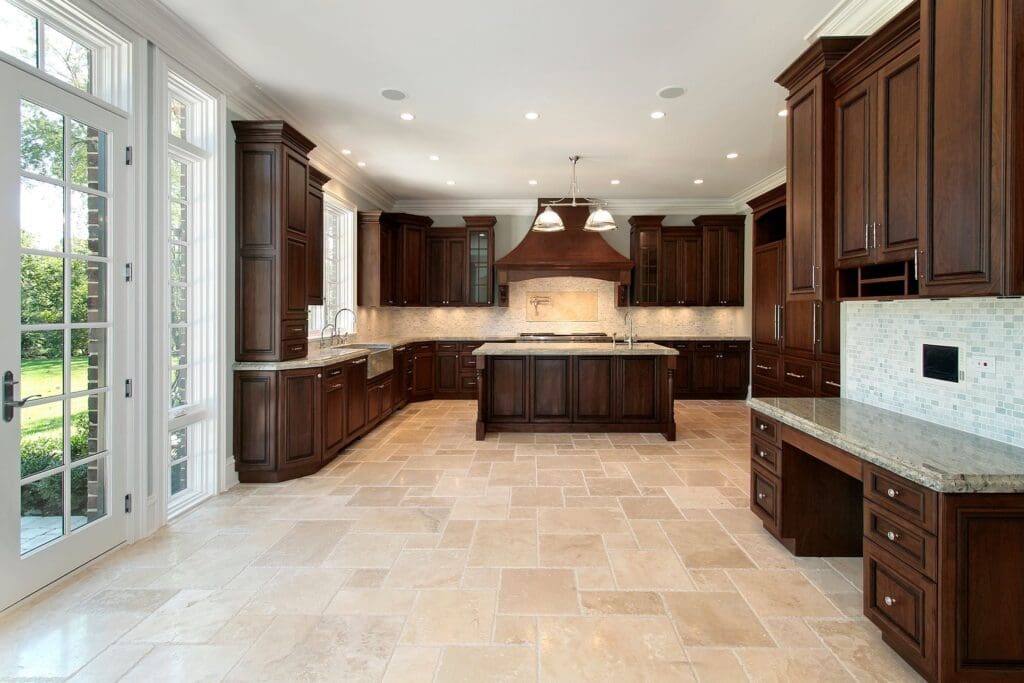

2. LAMINATE FLOORS
Average price per sqft: $1 to $3
Installation cost per sqft: $3 to $8
Pros: Available in a wide range of colors and styles, affordable, and easy to install, clean, maintain, and repair.
Cons: Laminate floors can be damaged easily by scratches, burns, and heavy furniture. They can also make noise when walked on if poorly installed
Why choose laminate flooring? It’s light and durable and offers a cheaper alternative to tile or hardwood. Laminate is also much easier to maintain, making it ideal for high-traffic rooms or play areas. You can install laminate yourself, but remember that it can pull up quickly or get clumsy if poorly laid. Avoid laminate in wet areas as it doesn’t handle moisture well.
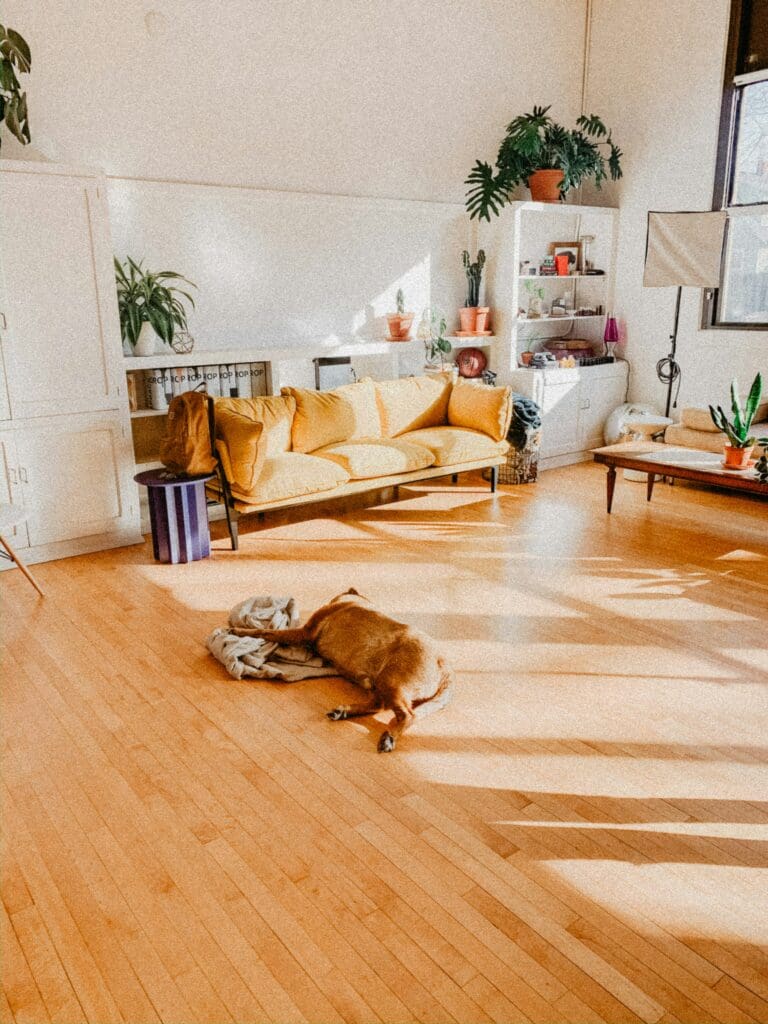

3. VINYL FLOORS
Average price per sqft: $1 to $6
Installation cost per sqft: $2 to $11
Pros: Highly durable, waterproof, scratchproof, affordable, versatile, easy to install, and clean.
Cons: Expensive compared to other options, and harder to install
Vinyl floors may have a reputation for looking tacky, but modern manufacturing improvements significantly improve quality. Vinyl is the most affordable waterproof flooring. You can use it in bathrooms and kitchens and have laminate floors everywhere else. Consider luxury vinyl tile (LVT) if your budget allows. LVT is thicker than regular tile, super realistic in its look, and textured to imitate wood or stone closely.
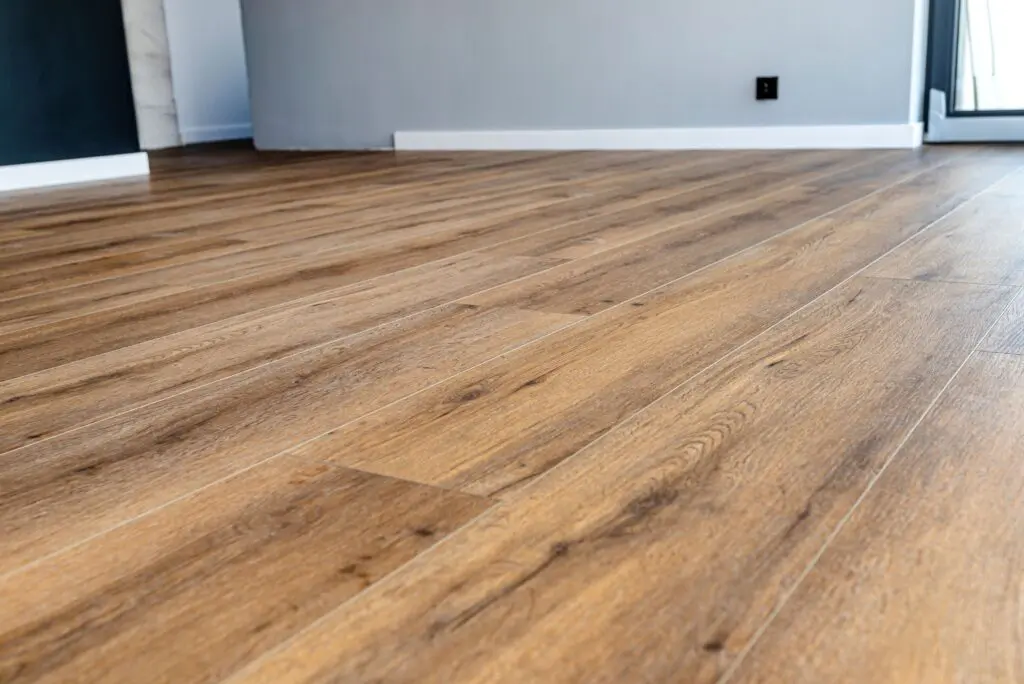

4. HARDWOOD FLOORS
Average price per sqft: $3 to $10
Installation cost per sqft: $3 to $8
Pros: Wide range of colors and finishes; durable and resilient; works with every decor style. Durable, easy to clean, and simple to install.
Cons: Can be expensive to install and maintain; can fade when exposed to sunshine. Susceptible to scratches, dents, and damage from dropping toys or furniture on them – not ideal for homes with kids or pets.
Why choose hardwood flooring? Hardwood exudes warmth, character, and style, but only if you do it right. There’s a huge variety of wood floors, including walnut, pine, oak, and cherry, with various patterns, inlays, and stains. However, the material and installation costs also vary, so comparing prices beforehand is best. A wood floor is a good investment because you can refinish it over decades. Unfortunately, the initial cost may put it beyond reach for many homeowners. At NYKB we have successfully installed and refinished beautiful hardwood flooring for clients in NYC.
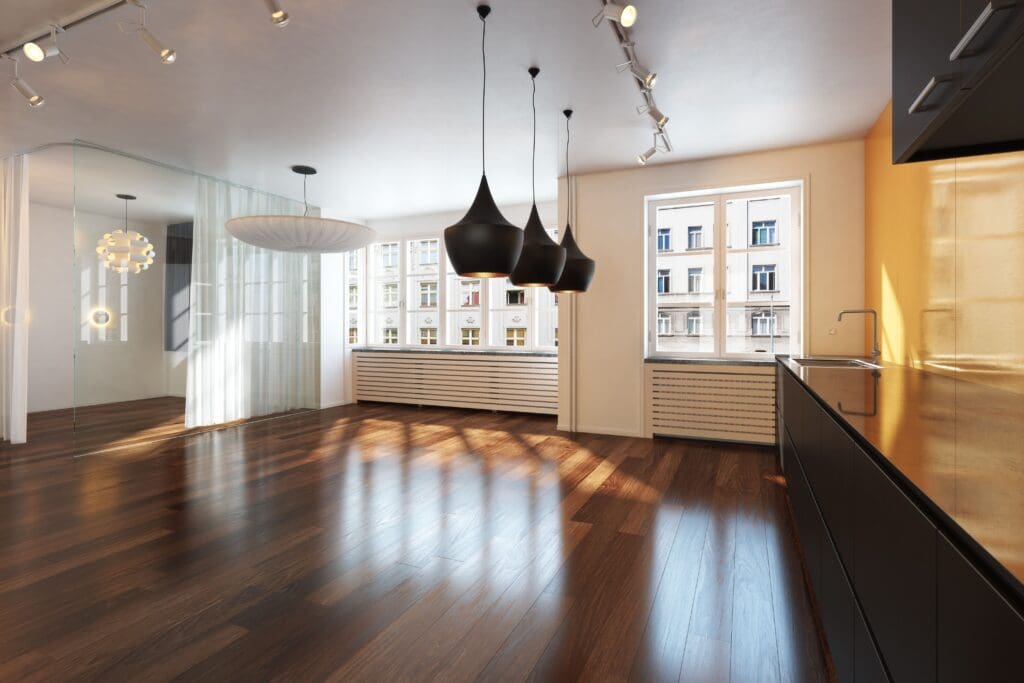

5. CARPETED FLOORS
Average price per sqft: $1 to $5
Installation cost per sqft: $1 to $8
Pros: Versatile with many designs and colors, a cheaper flooring option that’s easy to install, and can reduce home echoes and noises. Ideal for small rooms; feels warm underfoot. Made from natural, recyclable materials.
Cons: Fast wear and tear in high-traffic homes, requires regular maintenance, and is less durable than other flooring materials. Unsuitable if you have allergies or pets.
Add a wall-to-wall carpet to keep the space warm if you’re looking for a new playroom, home office, or gym flooring. Many different textures, colors, and materials are available to match any budget. Carpets are also relatively easy to install and replace, plus newer materials are more stain-resistant and designed to survive high foot traffic. On the downside, carpets can be high maintenance if you struggle with allergies or have pets. The pile accumulates dust, fur, and other allergens, so vacuum regularly and steam-clean your carpets every few months.
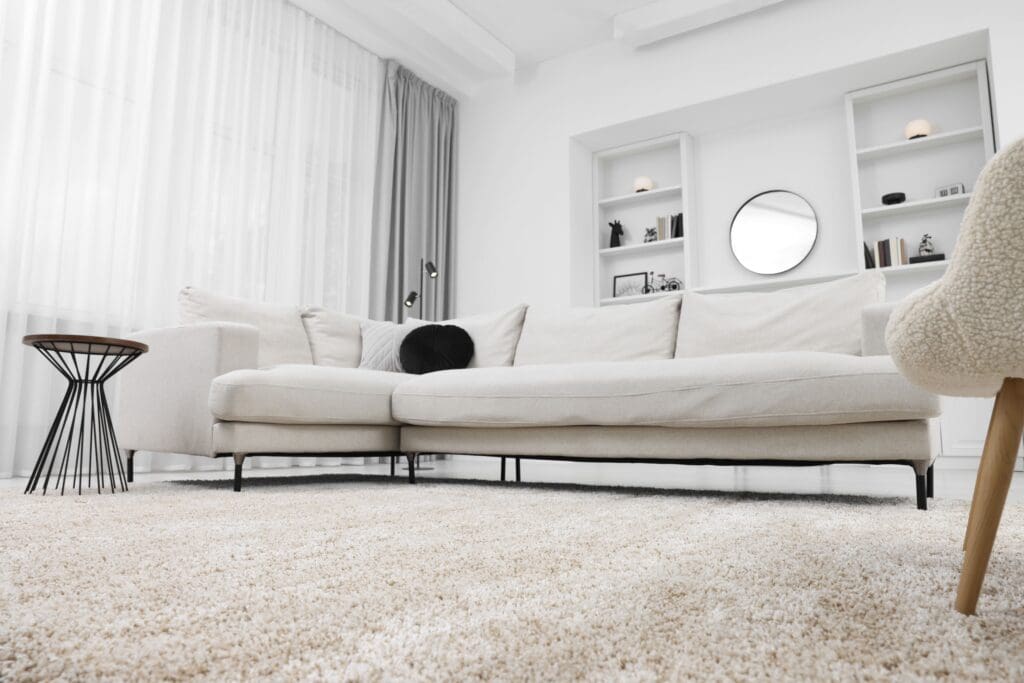

Go Unique: Six Different Kinds of Flooring
If you’re looking for a more unusual or adventurous material when choosing flooring for your space. Here are some options that might appeal to your budget and lifestyle:
- Linoleum for a durable, eco-friendly, and waterproof flooring option. It also works well with retro decor.
- Concrete for a smooth, seamless, and hypoallergenic floor. Choose a vibrant color and a glossy finish for a glamorous look.
- Rubber flooring tiles for high-traffic areas, playrooms, and basements. Choose this option for spaces where you’re mostly on your feet because of the warm, soft feel.
- Ceramic plank tiles for a wood floor look without breaking the bank. These are also much easier to maintain and forgiving with stains.
- Terrazzo for a natural textured floor with the same qualities as concrete. The stone or marble fragments create a distinct look for minimalistic spaces.
- Cork for a warm, noise-proof floor in low-traffic rooms. It’s a natural material with insect-repelling qualities, too.
How to Choose from So Many Types of Flooring: NYKB’s Top Ten Factors to Consider
With so many different types of flooring materials, it can be overwhelming to make a choice. To help you learn how to choose flooring and narrow down your choices ask yourself the following questions:
1. WHAT’S YOUR BUDGET?
Decide how much you want to spend per square foot of flooring. If your budget allows for under $2 per square foot, don’t limit yourself to laminate flooring if it doesn’t suit your needs. Shop for bargains on ceramic or porcelain tiles that meet your price range. That said, most flooring costs about $5 per square foot, including some wood floor options and higher-quality vinyl tiles. Increase your budget if you want imported wood floors, marble, or granite flooring for apartments or homes.
2. WHICH ROOMS NEED NEW FLOORS?
The key here is moisture and traffic: rooms that tend to get wet, e.g., bathroom, laundry room, and kitchen, have different flooring needs than living rooms and bedrooms. Concrete, ceramic tile, and vinyl are excellent for high to medium-moisture rooms, but you can use virtually any flooring type for moisture-free spaces. High-traffic rooms also need tougher floors to withstand friction, e.g., laminate or particular carpets. Otherwise, wood floors will scratch and need sanding and refinishing over time, which may increase your budget.
3. WHAT ARE YOUR MAINTENANCE NEEDS?
When wondering what to consider when choosing flooring, keep maintenance in mind. Will you need special cleaning methods or extra effort to keep your floors in good condition? For example, tile and laminate floors are easy to clean using a basic mop and soapy water. Carpets need vacuuming, stain removal, and the occasional steam cleaning to disinfect and remove odors. Hardwood floors need a combination of sweeping, mopping, vacuuming, and refinishing to keep them looking new. If you have any mobility challenges, choose floors that require minimum maintenance.
4. WHO WILL INSTALL YOUR NEW FLOORS?
Some floor types, such as vinyl and laminate, are better for DIY renovations than others. You can learn how to select flooring and install tile floors yourself, but it takes work and experience to do a good job. Carpets and wood floors need a pro, so browse for floor installers or hire a renovation company to handle the floors, plus any other upgrades in your apartment.
5. WHAT TRADEOFFS ARE YOU WILLING TO ACCEPT?
You need some flexibility to find the most suitable flooring for your apartment. For example, you may want a wood floor, but your budget only allows for tiles, so try getting tiles with a wood design. Or you’d like wall-to-wall carpeting, but maintenance becomes challenging, especially if you have children or pets. Look for alternatives for your must-have flooring idea because you may save money or effort with another option.
6. WHAT’S YOUR AESTHETIC?
You may find your floor’s look and feel come last because practical factors matter the most. You don’t want to splurge on a high-end wood floor only to find that you can’t maintain it, or choose a floor color that does nothing for your furniture style. Once you know your budget, installation, and maintenance needs, especially for NYC apartment flooring, you can get creative with the aesthetic. Think of high-quality laminate floors that look like natural wood, marble, or a concrete floor with a painted mural instead of carpeting.
7. CONSIDER THE TRAFFIC VOLUME OF YOUR HOME
Traffic volume refers to the number of people walking on the floor every day. If you have children or pets that run around in the house, consider getting a low-maintenance material like carpet or vinyl so that they won’t damage your floors efficiently.
High-traffic areas with lots of footfall all day long can do with a hard surface like wood or stone instead so that it will be easier to clean up dirt and debris.
8. ENSURE YOU HAVE THE RIGHT SUBFLOOR
Before choosing a new floor, it’s essential to know what type of subfloor your house has. A concrete slab is ideal because concrete can support the weight of any kind of flooring. If your home has a wood subfloor, you may need to reinforce it before installing new material.
You can add joists or plywood underneath. Plywood adds strength and stability and provides a smooth surface for gluing down the laminate or hardwood flooring.
9. DON’T FORGET TO THINK ABOUT DESIGN
Before choosing a material, think about what kind of look you want. What’s your dream kitchen or bathroom design? If you want your flooring to be subtle and blend in with the room’s other features, stick with neutral colors and finishes like wood, tile, or vinyl.
If you want something that stands out, consider choosing a patterned or colored material like carpet or stone tiles.
10. WILL IT ADD VALUE TO YOUR PROPERTY?
If you’re looking for a home improvement for resale and an investment-worthy material, then vinyl, hardwood, or laminate is your best bet. These durable materials will stand the test of time and retain their value.
What Types of Flooring Will You Choose?
With so much variety, choosing flooring can be a daunting task. Let NYKB come to the rescue. Our experts will advise you on the best types of flooring for homes and offices. With a dedicated project manager focused on each renovation, we’ll handle your flooring from concept to installation with our trademark expertise and experience. Contact NYKB to book your free consultation.

